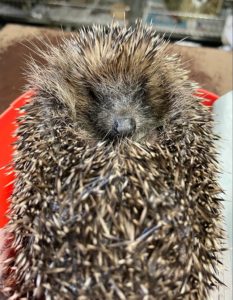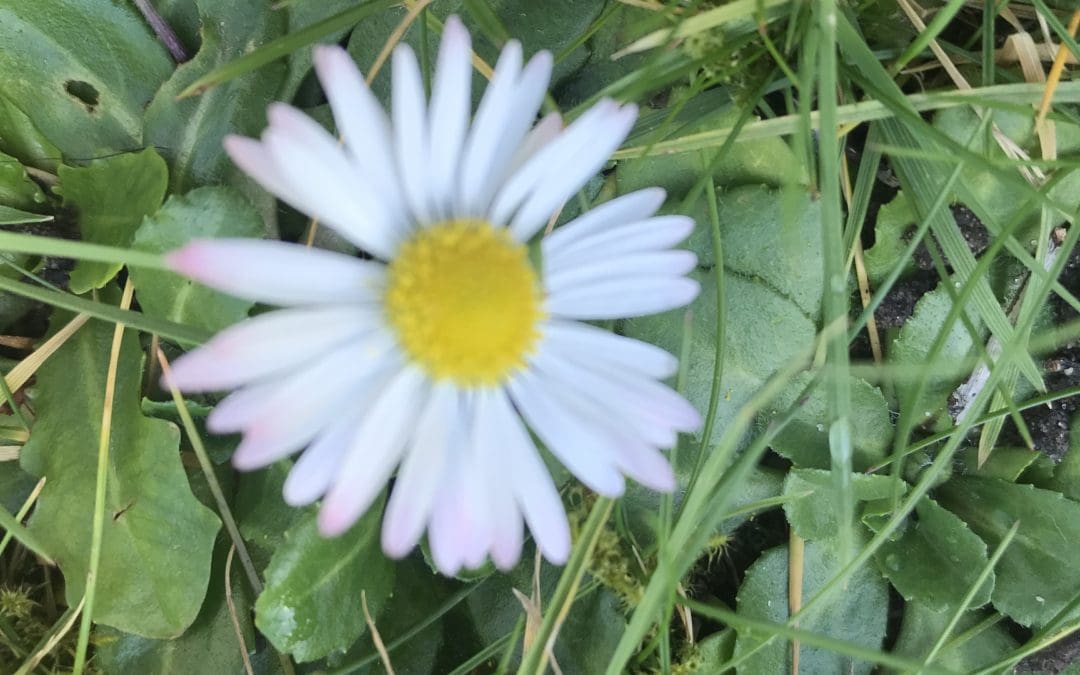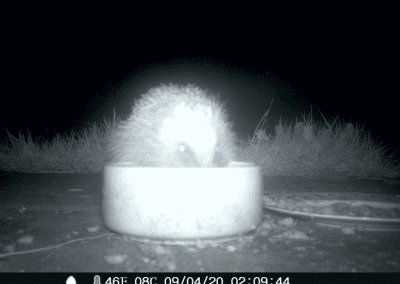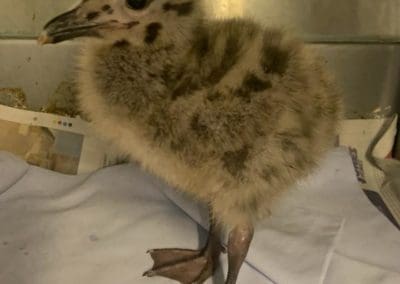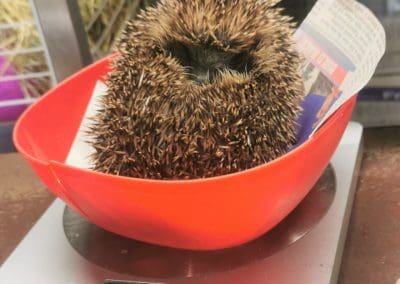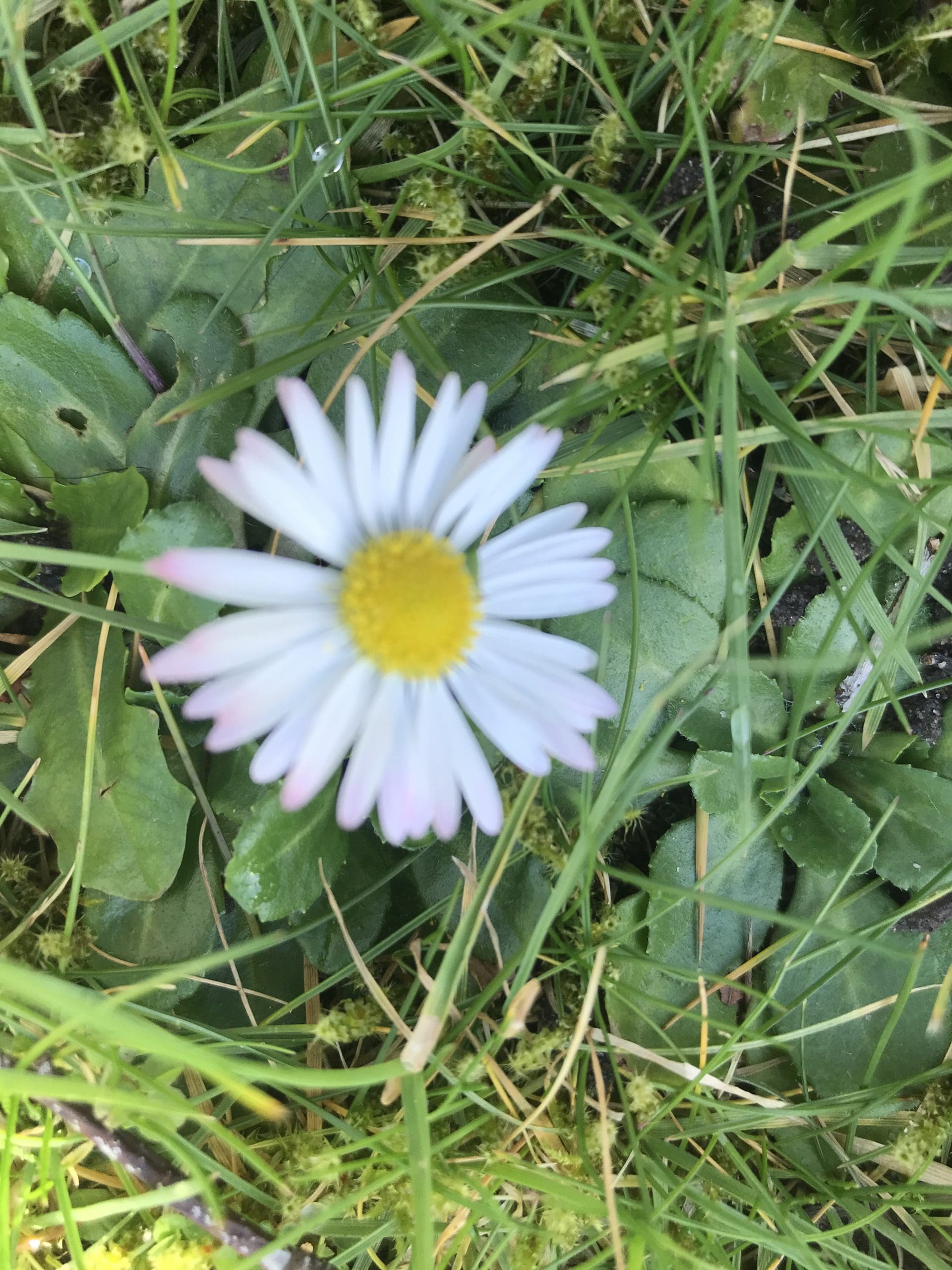
It has been a busy month on the wildlife unit. With the weather warming up, the team have started releasing hedgehogs that have been overwintering here. This month, 21 hedgehogs have been released back out into the wild – which is amazing! It is such a rewarding part of the job, seeing individuals that have made it through injuries and illnesses and are now back out thriving in the wild.
April has been a whirlwind month, with six hedgehogs being admitted in one day! The next few months are only going to get busier, so we will definitely have lots of admittance stories to tell you soon.
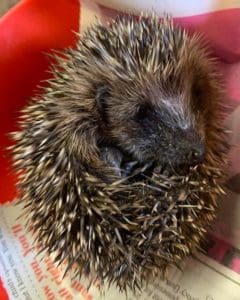
Avian Influenza Update
From Monday 2nd May, the Avian Influenza housing restrictions are being lifted. This means that we are looking at beginning to admit birds again on the wildlife unit. However, the risk of Avian Influenza has not disappeared overnight, therefore, before admitting birds the wildlife team are going to discuss biosecurity measures that are going to be put in place.
Please keep an eye out on our social media pages to see when we are starting to admit birds again.
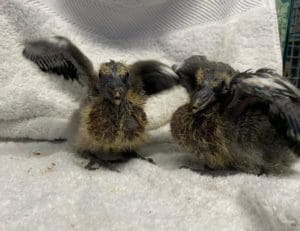
To find out more about the current Avian Influenza situation across the UK head over to this link https://www.gov.uk/guidance/avian-influenza-bird-flu.
Out and about in April
The fen raft spider, the UK’s largest spider that can grow to the size of a human palm, is increasing in numbers for the first time in years, despite being on the brink of extinction just a decade ago. Thankfully, the fen raft spider is harmless to humans as an RSPB report stated that numbers are now in the thousands. It’s the biggest of the UK’s 660 spider species and they can reach an impressive leg span of up to three inches.
Britain’s blue tits suffered a poor breeding season in 2021, due to a dry, then wet and chilly spring, which meant nestlings hatched before the annual explosion in caterpillar numbers. The good news is that blue tit populations can recover quickly. The species has huge clutches: a dozen eggs is normal. Clutches of 16 are known which is incredible for a bird that weighs 10–11g. Females lay in April or May so it’s worth looking out for an occupied nestbox or nest to see how the pace of activity changes with hatching. Two signs to look for are increased visits by the male with food, and birds leaving the box carrying the chicks’ faecal sacs, to deposit away from the nest.
Spring is weasel breeding season, though the kits usually won’t venture above ground before May or June. Their father left long ago, so the female has her work cut out to find enough voles and mice to satisfy them. Weasel kits are weaned at three to four weeks, and can make their own kills at eight weeks.
Sea lettuce, is a small seaweed that looks remarkably like a curly-leaved variety of lettuce. The fronds of sea lettuce are delicious and beautifully translucent when seen in the still, shallow waters of a rockpool. While sea lettuce brings a year-round splash of colour to Britain and Ireland’s rocky shores, it’s said to be best harvested now, in early spring. It can be steamed, added to soups or used to wrap parcels of rice. Responsible foragers cut only the top half of a frond, leaving the lower part and its anchor-like ‘holdfast’ in place, so the seaweed can regrow.
Among the many summer migrants returning to the UK in April are house martins. They have spent the winter in Africa, most likely above the rainforests of West Africa. Sadly, these birds have been added to the UK’s list of threatened species due to a steep population decline. A key factor in their demise could be the switch to plastic soffits. This deprives house martins of traditional nest sites under house eaves and gutters, and research shows that pairs that do attempt to nest on PVC have less success, perhaps because their mud cups are prone to fall off. Installing artificial nests may help, and might encourage house martins to colonise a building. But they prefer to construct their own homes, which takes 10 days and about 1,000 beaks full of mud.
Fine spring days are at a premium in the Scottish Highlands and islands, but offer one of the best chances of seeing golden eagles. These magnificent raptors, with a head and nape the colour of single-malt, may be glimpsed cresting peaks and gliding along ridgelines. By April, mated females will be sitting on a pair of eggs at the eyrie, a rocky ledge sometimes used by generations of eagles. But their mates will be patrolling the territory and hunting for two, so more visible than usual. If you’re lucky, you might see a male ‘sky dance’. The rollercoaster series of dives and climbs is part courtship but mostly a signal to other eagles that this area is taken. Today, Scotland has about 500 breeding pairs and, were it not for persecution, could support more. A reintroduction project underway in Dumfries and Galloway might be the first of several that will help these birds reclaim their former haunts.
In spring, road verges, roundabouts and other grassy places that have escaped herbicides often in the so-called ‘wild belt’ surrounding urban areas are transformed by dandelions. Each dandelion flowerhead is made of up to 100 florets, and their nectar flow peaks in late morning. Just eight dandelions provide enough for 15,000 bee visits per day. Dandelions aren’t just a potential food source for beneficial insects, they also help improve the soil. Their long taproots are the reason gardeners find dandelions so hard to eradicate. However, the lengthy roots are also excellent soil aerators that help loosen up compacted soil. Just the presence of dandelions can alert you to potential problems with your soil, such as infertility. Dandelions are also edible from taproot to top and have medicinal properties. Their roots can be used to brew tea and they contain high amounts of vitamin A, C and K along with several minerals such as calcium.
Did you Know…
That 90%of water voles have disappeared in 50 years.
That common daises are edible and also medicinal. They have a slight lemon flavour and can be used in salads, soups, sandwiches or baked in cookies. They are rich in vitamin C when stewed in a tea and are also good for treating inflamation, bumps and bruises.
London is home to over 15.000 species of wildlife.
Lobsters, crabs and octopus are now recognised as sentient beings in government policy decision making.
Please remember to…
Support wildlife at this time of the year, by putting food and water out for breeding birds and other wildlife such as hedgehogs. Dried cat or dog biscuits are ideal for hedgehogs, but avoid fish flavours. Please don’t put milk out for hedgehogs as they are lactose intolerant.
Providing shallow saucers filled with water and small stones are ideal for insects to drink from.
Please remove rubbish from your gardens or local area to prevent wildlife from injury.
And Finally…
Always seek advice from wildlife staff before bringing an animal to the rescue. If an animal is injured, please take it to a vet as we don’t always have a vet on site.

Merchandise

Freshfields Lottery
